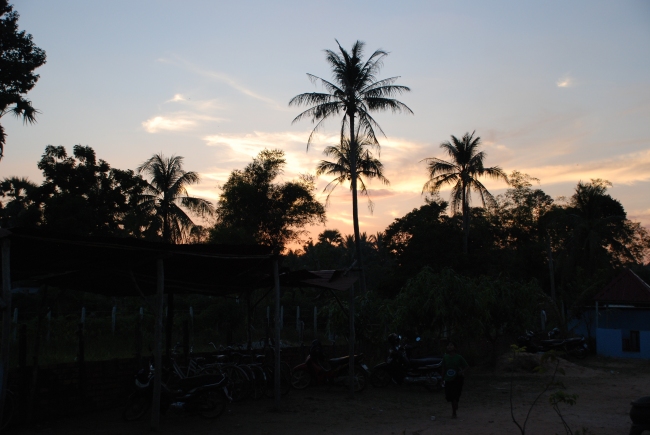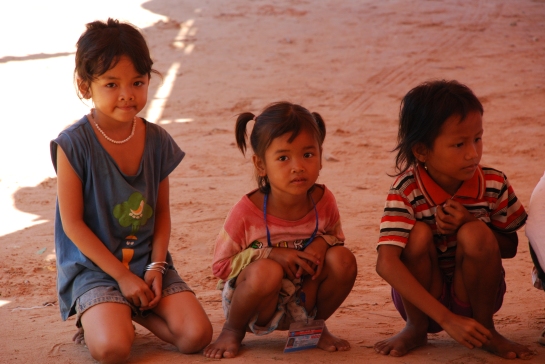
Darkness falls quickly in Cambodia. A group of young men were laughing and shouting, they weren’t human; they were ghosts.
When dusk falls in Bakong, it falls mighty quickly. One minute the sky is a fiery orange and the next, everything is pretty well pitch black. On a clear night – which is not that often in the hazy tropics – you can look up and see stars bright enough that it seems you can almost reach them. On one of these evenings I had just emerged from the classroom at Savong School when I looked up and I saw a man-made satellite drifting silently, eerily, across the sky. I pointed this out to a couple of students, and soon there was a large group of us scanning the horizon for more satellites.
But in this same schoolyard there are other unseen things – eerie things – which locals acknowledge but Westerners find difficult to believe. I’m talking about ghosts, and when I first went out to Savong School several of the locals told me about the ghosts in the schoolyard. First, there is the elderly lady, a widow, who lives in the tree beside the generator shed. She is harmless and likes to be left alone. People talk respectfully of the old lady.
But back in the day when Savong lived in a thatch hut on the school grounds, I was told of another group of ghosts – young figures – who would wander into the schoolyard at night, laughing, drinking and disturbing the peace. Now where I live in Auckland New Zealand, there are plenty of these young people – we used to have a nightclub located opposite our house – so I wondered, were these really ghosts that the locals had heard, or simply young people; looking for a good time?
“No, these were definitely ghosts!” I was told. And in fact that was one reason why, at that time, the installation of the gates were seen as an important step for the school. It wasn’t just to keep out thieves, (see our recent story,) but to keep out the disturbing spirits.
What I like about the Cambodian ghosts, is that they seem approachable and basically decent. The same is true in Thailand, and Thai stories I have read feature the same benign spirits. How different from western literature in which ghosts are inevitably unhappy souls determined to disturb the lives of the living. Here in Cambodia the ghosts are simply part of the neighbourhood, and don’t seem to be a worry to anybody. Live and …ahem…let live.
Near the old lady’s tree Savong used to have a small Buddhist shrine at which he would burn incense and occasionally offer prayer. In Cambodia you will see these shrines at hotels, office buildings and people’s homes. Spiritual life is a very important part of the Cambodian social fabric. One evening Savong asked if I wanted to pray with him at the shrine, and I agreed.
There, in the dark we kneeled before the shrine and beside the old woman’s tree. Above us was the infinity of stars, and for a few minutes I was utterly swallowed up in the vast cosmic silence. I was conscious for those minutes of the vast gulf that lay between our two cultures, and at the same time I was conscious of our vast similarities as two mere humans: two specks in a mysterious universe. I prayed for Savong, I prayed for the school, and yes I prayed for the old woman in the tree.
By the way, if you don’t know me, my name is Duncan Stuart and I’m a New Zealand based writer and researcher and supporter of Savong’s School in Cambodia. I love to write and would love your company – how about clicking the “follow button.” Thanks!








You must be logged in to post a comment.